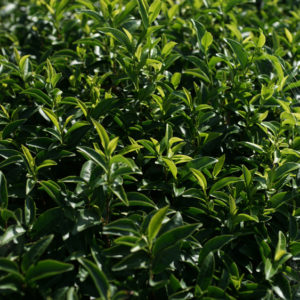
Koushun (香駿, こうしゅん) has such a different aroma and flavor, that anyone can tell that it is different from the Yabukita cultivar.
Nowadays, this cultivar is well-known among lovers of single cultivar Japanese tea.
While it still isn’t widely available, you can purchase it online without much difficulty.
History of Koushun
In 1970 in Shizuoka prefecture, Kurasawa was crossed with Kanayamidori and the best offspring was selected.
It was registered under the seed and seedling law in the year 2000 as Koushun.
Suruga (駿河) was a former province located in present day Shizuoka prefecture. That’s the origin of the second Chinese character in Koushun.
The first Chinese character, 香, means aroma. It was chosen because the aroma of this cultivar is its strongest point.
Characteristics of Koushun
The buds have an oval shape and a medium size. They are dark green and have a medium luster.
Mature leaves of Koushun have a thin shape and medium size. Their color is the same as the buds.
The amount of wrinkles and serration of the leaves is also medium.
Koushun’s cuttings take root easily and have a good growth.
It is a normal budding cultivar which can be picked about a day earlier than Yabukita.
This cultivar has a good resistance to cold weather, similar to Yabukita.
It has a slightly better resistance to anthracnose than Yabukita, but it is weak against the bacterial shoot blight.
Koushun can also be susceptible to the white peach scale.
The yield at harvest is higher than Yabukita, and the tea leaves can be tightly rolled when made into sencha. They have a dark green color and luster.
Its aroma is floral and somewhat herbal. It feels very fresh.
Once steeped, it offers a bright yellow liquor, and a balanced flavor with a long aftertaste.
It’s very much worth trying out.




